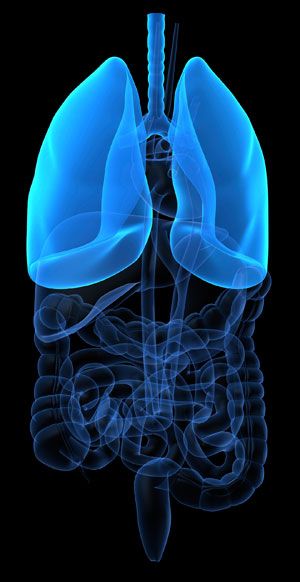EGFR Inhibitor Demonstrates Activity in <em>T790M</em>-Mutated NSCLC
CO-1686 has demonstrated promising activity without producing many of the side effects traditionally associated with the class of drugs in patients with T790M-mutated non-small cell lung cancer (NSCLC).
CO-1686 has demonstrated promising activity without producing many of the side effects traditionally associated with the class of drugs in patients with T790M-mutated non-small cell lung cancer (NSCLC).

According to updated phase I findings presented at the 4th European Lung Cancer Conference (ELCC), the next-generation EGFR inhibitor CO-1686 has demonstrated promising activity without producing many of the side effects traditionally associated with the class of drugs in patients withT790M-mutated non-small cell lung cancer (NSCLC).
In an analysis of 22 patients with centrally confirmedT790Mmutations, which typically denotes resistance to therapy, the objective response rate (ORR) was 64% with an overall clinical benefit rate of 91%. At 6 months, the median progression-free survival was not reached for patients withT790Mmutations compared with a 3-month median forT790M-negative patients treated with CO-1686. Following the positive results from the phase I portion of the study, two phase II expansion cohorts opened for patients with NSCLC who test positive for theEGFR T790Mmutation immediately following progression on one or more EGFR-targeted TKI.
“These data are completely consistent with what I have seen personally in my own patients,” Jean-Charles Soria, MD, PhD, a professor of medicine and medical oncology at Paris University, a cancer specialist at Gustave Roussy Cancer Center, and the European lead investigator of the CO-1686 study, said in a release. “CO-1686 provides meaningful and long-term benefit for patients who until now have had limited, if any, options. I am very enthusiastic about participating in the continued development of this agent.”
In August 2013, Clovis Oncology, the company developing CO-1686, transitioned the drug from an initial freebase capsule to a hydrobromide salt formulation. Following the reformulation, the company noted a lack of cutaneous and gastrointestinal toxicity of any grade at the 500 mg daily dose.
The analysis presented at ELCC contained data from 62 patients treated with both formulations of the drug, 22 of which had centrally confirmedT790Mmutations. The median number of prior therapies was 3, including 2 prior EGFR-targeted TKIs. The ORR of 64% was comprised of all partial responses by RECIST criteria. In 29 patients from the study with confirmedT790Mmutations (n = 22) andT790Munknown (n = 7), the ORR was 52%.
In total, 1 patient discontinued treatment with CO-1686 as a result of adverse events. The most common all grade adverse events were hyperglycemia, nausea, diarrhea, decreased appetite, and vomiting. The most common grade 3 adverse event was asymptomatic hyperglycemia (19%).
CO-1686 is an oral inhibitor of EGFR that selectively binds to activating mutations, includingT790M. The drug is designed not to target wild-typeEGFR, potentially preventing certain side effects.
“One of the issues with oncogene-targeted therapies is that while initial response rates can be promising, these responses can be short-lived,” Patrick J. Mahaffy, President and CEO of Clovis Oncology, said in a release. “In contrast, as CO-1686 phase I data extend and mature, we see both a consistency of response rate that is very encouraging as well as an impressive initial duration of clinical benefit.”
Based on the early success of the drug, Clovis Oncology plans to initiate a number of additional trials to continue exploring CO-1686 for patients withEGFR-positive NSCLC. The ongoing development program, labeled TIGER (Third-generation Inhibitor of Mutant EGFR in Lung Cancer), is scheduled to start in mid-2014.
The randomized phase II/III TIGER1 study will compare CO-1686 against erlotinib in patients withEGFR-positive NSCLC who have not received an EGFR TKI. The TIGER2 study will explore CO-1686 in patients withT790Mmutations directly after progression on their first TKI. The TIGER3 study will compare CO-1686 to chemotherapy in the salvage setting for patients with NSCLC.
If favorable results continue, Clovis Oncology plans to submit data from the expansion cohorts of the phase I/II study along with results from the TIGER2 study for regulatory approval. On this timeline, the submission is expected in 2015.
Brahmer Considers First-Line Immunotherapy Options in Metastatic NSCLC
February 17th 2025During a Case-Based Roundtable® event, Julie R. Brahmer, MD, MSC, reviewed the CheckMate 9LA, KEYNOTE-407, and POSEIDON trials of immunotherapy in patients with metastatic non–small cell lung cancer.
Read More